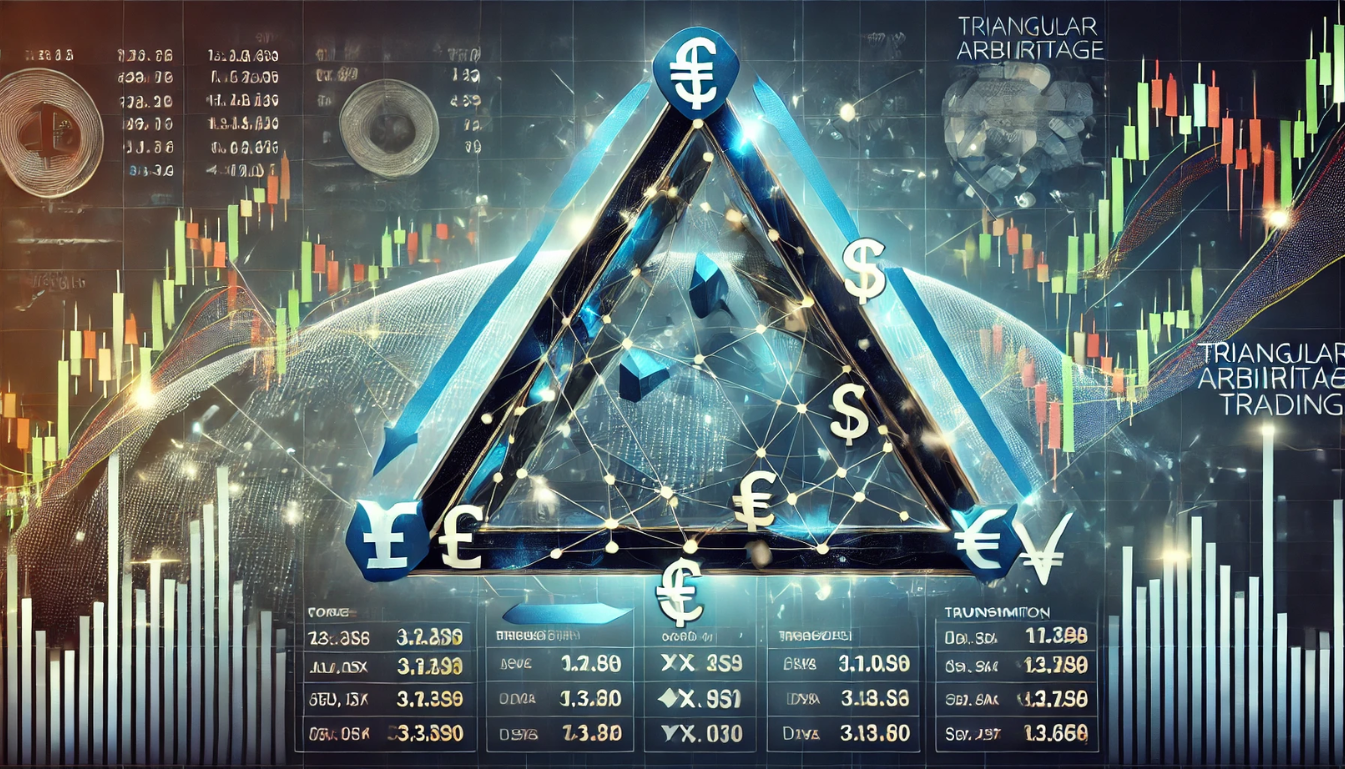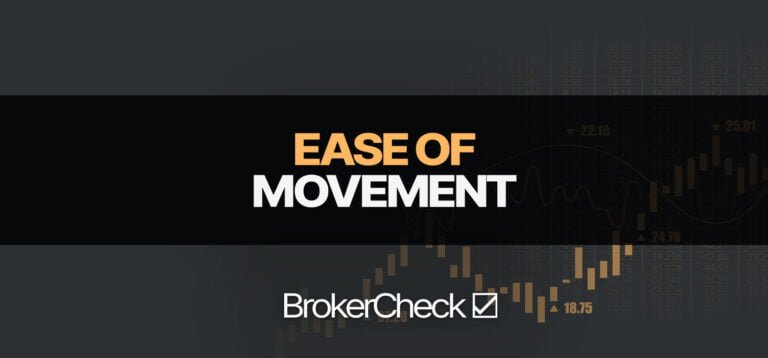1. Overview of Triangular Arbitrage
Triangular arbitrage is a sophisticated trading strategy used in the foreign exchange (forex) market to exploit discrepancies in currency exchange rates. It involves trading three different currencies to benefit from the imbalances in their relative values. This strategy requires traders to make a series of trades that start and end with the same currency, generating a profit in the process if the rates are favorable. Triangular arbitrage is a risk-free strategy in theory, but it requires precision, speed, and real-time data to execute successfully in practice.
1.1 Define Triangular Arbitrage
At its core, triangular arbitrage is the process of exploiting inefficiencies in the exchange rates between three currencies. It involves the simultaneous buying and selling of three currency pairs, converting one currency into another, and then back into the original currency. The aim is to take advantage of slight differences in the exchange rates that exist between currency pairs across different markets or platforms.
For example, if you have USD, EUR, and JPY, and the exchange rates between these currencies are misaligned, triangular arbitrage enables you to profit by converting USD to EUR, EUR to JPY, and then JPY back to USD at favorable rates. The profit is realized due to the temporary imbalance between the exchange rates.
1.2 Explain the Concept and Mechanics
The mechanics of triangular arbitrage rely on the relative pricing of three currency pairs. Typically, traders will use a currency arbitrage formula to identify discrepancies. Let’s take a scenario involving three currencies: USD, EUR, and JPY.
Assume that the direct exchange rates in the market are as follows:
In an ideal world, these rates should be aligned according to their cross-rate relationships. If not, an arbitrage opportunity arises. For instance, if you notice that by converting USD to EUR, EUR to JPY, and then JPY back to USD gives a profit due to a pricing error, you could exploit this discrepancy.
The process follows these steps:
- Convert USD into EUR at the current market rate.
- Convert the EUR into JPY.
- Finally, convert the JPY back to USD.
If there is a mispricing, this chain of transactions will result in more USD than you initially started with, thus creating a profit.
1.3 Highlight the Potential Benefits and Risks
Benefits:
- Risk-Free in Theory: Triangular arbitrage is considered a risk-free strategy because it theoretically eliminates exposure to market fluctuations. Since all trades occur almost simultaneously, the risk of price movement is minimal if executed correctly.
- Capitalizing on Market Inefficiencies: It provides an opportunity to make a profit from inefficiencies in the forex market, even if those inefficiencies last only for a brief moment.
- Non-Directional Trading: Since triangular arbitrage does not depend on market direction (whether the market is going up or down), traders can profit regardless of the broader economic climate.
Risks:
- Execution Speed: The key to successful triangular arbitrage is speed. Markets can adjust quickly, and if the trades are not executed instantly, the profit opportunity can vanish.
- Transaction Costs: Even a small profit can be eroded by transaction fees, spreads, and other trading costs associated with executing multiple trades.
- Market Liquidity: Lack of liquidity in the market can result in slippage or inability to complete the trades at the desired rates.
- Technological Requirements: This strategy requires real-time data feeds, advanced trading platforms, and in many cases, automated systems to ensure that all trades are executed simultaneously.

| Key Concepts | Explanation |
|---|---|
| Definition | Exploiting exchange rate inefficiencies between three currency pairs |
| Mechanics | Involves converting currencies in a loop (e.g., USD → EUR → JPY → USD) to profit from rate differences |
| Benefits | Risk-free in theory, non-directional profits, capitalizing on temporary market inefficiencies |
| Risks | Speed of execution, transaction costs, liquidity issues, and technological demands |
2. Understanding Triangular Arbitrage
Triangular arbitrage is a complex trading strategy that requires a deep understanding of how currency pairs interact with one another. In this section, we will explore the key elements of this strategy, including the three-currency pair system, the process of calculating exchange rates, and how traders identify potential arbitrage opportunities.
2.1 Three-Currency Pairs Involved
The foundation of triangular arbitrage rests on the interaction between three distinct currency pairs. Unlike traditional forex trades, which usually involve only two currencies (such as USD/EUR), triangular arbitrage requires a trader to consider three currencies that are interconnected through their exchange rates. For example, if a trader is working with USD, EUR, and JPY, the relevant currency pairs could be USD/EUR, EUR/JPY, and USD/JPY.
These three pairs create a triangular relationship, meaning that the relative value of one currency impacts the others. To capitalize on an arbitrage opportunity, traders need to monitor the exchange rates between these pairs simultaneously. When a temporary price misalignment occurs between the three pairs, an arbitrage opportunity arises, allowing the trader to buy one currency and sell another, eventually converting back to the original currency to realize a profit. The ability to manage and execute trades on all three pairs quickly is crucial for this strategy to be effective.
2.2 Calculation of Exchange Rates
Calculating exchange rates is essential in triangular arbitrage, as even the smallest discrepancies can lead to profit. Traders use cross rates to determine the expected relationship between the three currencies involved. The cross rate is the exchange rate between two currencies, derived from their respective exchange rates with a third common currency. For example, if a trader knows the USD/EUR and EUR/JPY exchange rates, they can calculate the expected USD/JPY rate.
When calculating exchange rates for triangular arbitrage, traders often look for small deviations in these calculated values compared to the actual market prices. Any mismatch between the calculated and real-time rates indicates an opportunity for arbitrage. To carry out these calculations, traders may use complex formulas, advanced algorithms, or rely on arbitrage calculators provided by trading platforms.
Once the calculation reveals a profitable arbitrage opportunity, traders must act quickly. Since the forex market is highly liquid and efficient, these discrepancies are typically short-lived. Advanced software is often used to assist in calculating the rates in real-time and executing the trades instantaneously.
2.3 Identifying Arbitrage Opportunities
Identifying profitable arbitrage opportunities is both an art and a science. The forex market is vast and dynamic, with prices fluctuating constantly across different currency pairs. Traders who engage in triangular arbitrage must monitor these fluctuations in real time to detect pricing errors. This is where technology plays a significant role, as traders use sophisticated algorithms and trading platforms to scan the market for anomalies.
Arbitrage opportunities typically emerge when the market is moving rapidly, causing delays or discrepancies in pricing between currency pairs. For example, during periods of high volatility, a pricing inconsistency might occur between USD/EUR, EUR/JPY, and USD/JPY. Traders can then take advantage of this brief window of opportunity to execute the necessary trades before the market corrects itself.
However, identifying these opportunities requires a combination of technical tools and in-depth market knowledge. Traders often rely on automated systems to detect arbitrage opportunities as manual monitoring is rarely fast enough to capture these fleeting moments. These systems can continuously compare cross rates and live market prices, alerting traders when a profitable opportunity arises.

| Key Concepts | Explanation |
|---|---|
| Three-Currency Pairs | Involves interconnected currency pairs like USD/EUR, EUR/JPY, and USD/JPY, which create the basis for the arbitrage triangle. |
| Calculation of Exchange Rates | Involves calculating cross rates and identifying discrepancies between calculated and real-time exchange rates. |
| Identifying Opportunities | Requires real-time monitoring of the market for pricing discrepancies, often using advanced algorithms and trading platforms. |
3. Finding Arbitrage Opportunities
Finding arbitrage opportunities in the highly dynamic forex market is the crux of successful triangular arbitrage trading. In this section, we will explore the tools and methods that traders use to detect these fleeting opportunities. This includes the use of specialized arbitrage calculators, the importance of monitoring market conditions, and the role of real-time data analysis in identifying profitable situations.
3.1 Using Arbitrage Calculators and Software
One of the most effective tools for finding arbitrage opportunities is the arbitrage calculator, which is a piece of software specifically designed to detect pricing discrepancies between currency pairs. These calculators operate by continuously comparing the exchange rates of different currency pairs to the cross rates derived from each combination of three currencies. When an imbalance occurs, the software alerts the trader to a potential arbitrage opportunity.
The advanced nature of modern arbitrage calculators allows for real-time analysis of thousands of currency pairs across different forex platforms. These calculators can quickly detect small inefficiencies that may go unnoticed by the naked eye or by manual methods of trading. Once a profitable opportunity is identified, the software can either alert the trader or, in more advanced systems, automatically execute the required trades.
These calculators are crucial for triangular arbitrage, as the potential for profit often lies in minute discrepancies that exist for very short periods. Without the help of such software, manually identifying and executing trades within these narrow time windows would be nearly impossible.
3.2 Monitoring Market Conditions
While arbitrage calculators play an important role, they must be complemented by an understanding of broader market conditions. Forex markets are influenced by a variety of factors, including economic data releases, geopolitical events, and central bank policies. These elements can create periods of high volatility, during which arbitrage opportunities are more likely to arise.
For instance, when a central bank makes a surprise announcement, the resulting market reaction can cause temporary imbalances in currency exchange rates. Traders who are closely monitoring such events can position themselves to capitalize on any arbitrage opportunities that may arise. Similarly, during periods of economic uncertainty, markets can become less efficient, leading to mispriced currency pairs that are ideal for arbitrage.
Understanding market conditions also helps traders avoid potential pitfalls. In highly volatile markets, the risks of slippage and market movements between trades increase, which can affect the profitability of the arbitrage strategy. Therefore, a comprehensive market analysis is essential to ensure that traders not only identify opportunities but also manage the associated risks effectively.
3.3 Real-Time Data Analysis
In the fast-paced world of forex trading, real-time data analysis is a critical component of successful triangular arbitrage. Since arbitrage opportunities typically last only a few seconds to a few minutes, having access to the most up-to-date data is essential. Traders use sophisticated data feeds and trading platforms that provide real-time exchange rates, allowing them to react immediately to price discrepancies.
Advanced trading platforms not only offer real-time data but also provide tools for automated trading. These systems are equipped with algorithms that can detect arbitrage opportunities and execute trades in fractions of a second. The speed at which these trades are executed is often the difference between realizing a profit and missing the opportunity altogether.
In addition to fast execution, real-time data analysis enables traders to continuously monitor currency markets for any signs of inefficiency. By feeding real-time data into arbitrage algorithms, traders can ensure that they are always prepared to act on emerging opportunities. Without access to this kind of data, traders would be at a significant disadvantage in the highly competitive world of arbitrage trading.

| Key Concepts | Explanation |
|---|---|
| Arbitrage Calculators and Software | Specialized software that detects pricing discrepancies between currency pairs in real time, allowing traders to exploit fleeting inefficiencies. |
| Monitoring Market Conditions | Involves keeping track of broader economic and geopolitical factors that can create volatility and inefficiencies in currency markets. |
| Real-Time Data Analysis | Ensures traders have access to the latest market data and can execute trades instantly when arbitrage opportunities arise. |
4. Executing Triangular Arbitrage
Once a trader identifies a profitable opportunity, the next critical step is executing the triangular arbitrage strategy. This involves placing simultaneous buy and sell orders across the three currency pairs involved, capitalizing on price discrepancies, and closing positions to realize a profit. Each step must be carried out with precision and speed to ensure that the arbitrage opportunity is not lost due to market adjustments. In this section, we will discuss how these actions are carried out and the key considerations involved in executing triangular arbitrage successfully.
4.1 Placing Simultaneous Buy and Sell Orders
The essence of triangular arbitrage lies in executing three trades almost simultaneously. First, the trader must buy one currency, sell another, and then complete the cycle by converting the third currency back into the original one. Since arbitrage profits rely on minor discrepancies in exchange rates, timing is critical, and the trades need to be placed at the same time to avoid losses from price movements.
To achieve this, traders often use automated trading platforms capable of placing multiple orders in rapid succession. These platforms can handle complex trading strategies, such as triangular arbitrage, by linking the three trades together so that they are executed as a unified strategy. Manual execution is rarely used in today’s high-speed forex markets due to the risk of delays, which could result in missing the arbitrage window entirely.
The simultaneous nature of these trades ensures that the trader is not exposed to exchange rate fluctuations, as all positions are closed at virtually the same time. This is what makes triangular arbitrage theoretically risk-free, as long as the trades are executed without delay and the exchange rates hold steady during the execution process.
4.2 Capitalizing on Price Discrepancies
The entire purpose of triangular arbitrage is to capitalize on price discrepancies between the three currency pairs involved. These discrepancies are usually very small and can disappear quickly as markets self-correct. Therefore, speed is of the essence when executing the trades. Even a delay of a few seconds can be enough for the market to close the price gap, leaving the trader without a profit or even at a loss.
Advanced traders and institutions use algorithms designed to detect and execute trades within milliseconds, ensuring they capture these fleeting opportunities. The profit from triangular arbitrage comes from exploiting the difference between the cross rates of the currencies involved and their actual market rates. If the discrepancy is large enough to cover transaction costs and still yield a profit, the trader can capitalize on it by executing the necessary trades.
However, given the thin margins involved in triangular arbitrage, even small price movements during the execution phase can affect the outcome. As a result, successful traders ensure that they have access to fast, real-time data and high-speed execution platforms to make the most of these opportunities.
4.3 Closing Positions to Realize Profit
The final step in triangular arbitrage is closing all positions to lock in the profit. Once the trader has executed the buy and sell orders across the three currency pairs, they must convert the final currency back into the original one. This completes the triangular cycle and allows the trader to realize any gains from the price discrepancies that were exploited.
In theory, the profit is realized immediately after the trades are executed, as the entire strategy involves buying low and selling high through the currency loop. Since the trades are completed almost simultaneously, the trader is not exposed to market risks for any significant amount of time. This is why triangular arbitrage is considered a risk-free strategy in theory.
However, in practice, factors such as transaction costs, slippage, and market movements during the execution process can affect the final outcome. Therefore, traders must carefully manage the execution to ensure that their positions are closed at favorable rates, allowing them to realize the intended profit.
| Key Concepts | Explanation |
|---|---|
| Placing Simultaneous Orders | The process of executing buy and sell trades almost simultaneously across three currency pairs to avoid price movements and capture arbitrage opportunities. |
| Capitalizing on Price Discrepancies | Traders exploit small discrepancies between the cross rates of currencies and actual market prices, aiming to profit from temporary mispricings. |
| Closing Positions for Profit | Completing the triangular cycle by converting the third currency back into the original, locking in any profits from the arbitrage. |
5. Risk Management and Considerations
Triangular arbitrage, while theoretically risk-free, involves several practical risks that traders must carefully manage. The fast-moving nature of the forex market, along with external factors such as transaction costs and slippage, can introduce challenges to executing this strategy successfully. In this section, we will explore the key risks associated with triangular arbitrage, including market volatility, transaction costs, slippage, regulatory restrictions, and ethical considerations.
5.1 Market Volatility
Market volatility poses a significant risk to triangular arbitrage traders. The forex market is highly liquid and can change in an instant due to economic events, geopolitical developments, or shifts in market sentiment. Even though triangular arbitrage involves executing trades simultaneously, any slight delay in execution can expose the trader to price movements between the trades.
For instance, during periods of high volatility, such as after a major economic announcement, currency prices can fluctuate rapidly. This increases the likelihood that the exchange rates between the three currency pairs will move in unfavorable directions before the trades are fully completed. While arbitrage opportunities often arise in such volatile conditions, the risks associated with these price movements can lead to losses if not managed carefully. Traders typically mitigate this risk by using advanced trading systems capable of executing trades at lightning speed to minimize the impact of volatility.
5.2 Transaction Costs
One of the most significant challenges in triangular arbitrage is the cost associated with executing multiple trades. Each time a trader buys or sells a currency pair, they incur transaction costs in the form of spreads, commissions, and sometimes additional fees imposed by trading platforms or brokers. Since triangular arbitrage relies on exploiting small discrepancies in exchange rates, these transaction costs can quickly erode any potential profits.
Traders need to factor in these costs when calculating whether a particular arbitrage opportunity is worth pursuing. Even if a pricing discrepancy exists, the profit margin may be too small to cover the transaction costs, leaving the trader with a net loss. To minimize these costs, high-frequency traders often use specialized accounts with reduced fees or trade in high-volume environments where spreads are tighter. In addition, automated systems can help optimize trade execution by selecting the most cost-effective route for each trade.
5.3 Slippage
Slippage occurs when the actual price at which a trade is executed differs from the expected price due to market movements or delays in trade execution. In triangular arbitrage, slippage can be a major risk because the strategy depends on executing three trades at nearly the same time. Any delay or slippage in executing one of the trades can result in a loss rather than a profit, as the exchange rate may have shifted by the time the trade is completed.
For example, if a trader expects to buy EUR/USD at a certain rate but ends up paying a slightly higher rate due to slippage, this could affect the profitability of the entire arbitrage transaction. Slippage is particularly common during periods of low liquidity or high market volatility, where the price can change between the time an order is placed and the time it is filled. To reduce slippage, traders often use platforms with fast execution speeds and deep liquidity, ensuring that trades are executed as close to the expected price as possible.
5.4 Regulatory Restrictions
Regulatory restrictions in different countries or regions can impact the ability of traders to engage in triangular arbitrage. Forex trading is subject to various regulations that vary from one jurisdiction to another, and these rules can affect the execution of arbitrage strategies. For example, some regulators impose restrictions on certain types of trading practices, such as leveraging or high-frequency trading, which can limit a trader’s ability to execute triangular arbitrage.
In addition, some countries have controls on currency exchange rates or restrict capital flows, which can reduce the availability of arbitrage opportunities. Traders need to be aware of the regulatory environment in which they are operating to ensure compliance with all applicable rules. Failure to do so can result in penalties, legal actions, or the freezing of trading accounts.
5.5 Ethical Considerations
While triangular arbitrage is a legitimate trading strategy, ethical considerations may arise depending on how the trades are executed and the impact on the market. For instance, large institutional traders using automated systems might exploit price discrepancies in a way that distorts the market for smaller participants. This can lead to concerns about market fairness and transparency, especially in less liquid markets where even small trades can have a significant impact on prices.
Furthermore, some critics argue that high-frequency trading (HFT) strategies, including those used for triangular arbitrage, contribute to market volatility and instability. While these strategies aim to exploit inefficiencies in the market, they can also exacerbate price fluctuations by amplifying short-term movements. Traders must weigh the potential impact of their activities on the broader market and consider the ethical implications of using high-speed trading technologies.
| Key Concepts | Explanation |
|---|---|
| Market Volatility | Rapid price movements in the forex market can cause unfavorable shifts in exchange rates between trades, leading to potential losses. |
| Transaction Costs | Spreads, commissions, and fees can erode the small profits generated by triangular arbitrage if not carefully managed. |
| Slippage | The difference between the expected and actual execution price, which can result in a loss of profitability due to delayed trades. |
| Regulatory Restrictions | Legal and regulatory frameworks in different jurisdictions may limit or restrict the execution of arbitrage strategies. |
| Ethical Considerations | High-frequency and automated trading systems can raise ethical concerns about market fairness and the potential for increasing volatility. |
6. Strategies for Successful Triangular Arbitrage
To execute triangular arbitrage successfully, traders must employ various strategies that enhance speed, efficiency, and profitability. This involves leveraging advanced technologies like high-frequency trading (HFT) and algorithmic trading, as well as considering manual trading techniques in specific scenarios. Additionally, arbitrage trading platforms offer tools that can make the process smoother and more profitable. In this section, we will explore these strategies in depth to understand how they contribute to the successful execution of triangular arbitrage.
6.1 High-Frequency Trading (HFT)
High-frequency trading (HFT) plays a pivotal role in modern triangular arbitrage strategies. HFT involves executing trades at extremely high speeds, often in milliseconds or microseconds, using powerful algorithms and advanced computing infrastructure. This speed is crucial for triangular arbitrage because the pricing discrepancies that traders aim to exploit are often very small and last only a few seconds.
HFT firms use sophisticated algorithms that continuously scan the market for arbitrage opportunities. When a discrepancy between three currency pairs is detected, the algorithm instantly executes the buy and sell orders required to complete the arbitrage cycle. The advantage of HFT is that it minimizes the risks of slippage and price fluctuations that can occur in slower manual trading. Furthermore, HFT systems can process vast amounts of data in real time, ensuring that no profitable opportunity is missed.
However, HFT is not without its challenges. The cost of setting up and maintaining the necessary infrastructure, such as co-location services that place trading servers near the exchanges, can be prohibitively high for individual traders. Additionally, HFT is heavily regulated in many jurisdictions, and traders must comply with strict rules to avoid market manipulation or other illegal activities.
6.2 Algorithmic Trading
Algorithmic trading is another critical strategy used in triangular arbitrage. Like HFT, it involves using algorithms to automate the trading process. However, algorithmic trading is not solely focused on speed; it also incorporates complex mathematical models to analyze market conditions and identify arbitrage opportunities.
Traders can program these algorithms to monitor specific currency pairs and execute trades when certain conditions are met, such as when a pricing discrepancy exceeds a predefined threshold. The advantage of algorithmic trading is that it reduces human error and allows traders to take advantage of opportunities around the clock, even when they are not actively monitoring the market.
Moreover, algorithmic trading can be tailored to fit different trading styles. For example, traders can design algorithms to focus on specific timeframes, market conditions, or currency pairs that are more likely to present arbitrage opportunities. This flexibility makes it an essential tool for those looking to engage in triangular arbitrage on a regular basis.
6.3 Manual Trading Techniques
While high-speed automated trading dominates the arbitrage landscape, manual trading techniques can still be relevant, especially for individual traders or in markets where automation is less prevalent. Manual trading requires a trader to identify arbitrage opportunities by analyzing exchange rates between currency pairs and then placing the necessary buy and sell orders manually.
Though manual trading is slower and more prone to error than automated methods, it allows traders to use their intuition and market experience. In certain conditions, particularly in less liquid markets or during periods of low volatility, manual trading can be effective. Some traders may prefer to manually execute arbitrage trades when they spot clear discrepancies that automated systems might overlook.
However, manual trading in triangular arbitrage requires constant monitoring of the market and swift action to execute the trades before the price discrepancies disappear. It’s also essential to have access to reliable data feeds and trading platforms that provide real-time market information.
6.4 Leveraging Arbitrage Trading Platforms
Arbitrage trading platforms provide specialized tools designed to assist traders in identifying and executing arbitrage strategies more effectively. These platforms integrate real-time data feeds, calculators, and automated trading systems that streamline the process of triangular arbitrage. Many of these platforms are equipped with customizable algorithms that allow traders to set specific conditions under which trades should be executed, maximizing the efficiency of the strategy.
Additionally, some platforms offer risk management tools that can help traders minimize potential losses. For example, they may include features that monitor transaction costs and adjust trade execution parameters to ensure profitability. By leveraging these platforms, traders can reduce the time and effort required to manage multiple currency pairs and improve the overall success rate of their arbitrage trades.
While these platforms provide a range of benefits, they often come with costs such as subscription fees, commission charges, or minimum balance requirements. Therefore, traders must weigh these costs against the potential profits generated from arbitrage opportunities to determine if using such platforms is worthwhile.
| Key Concepts | Explanation |
|---|---|
| High-Frequency Trading (HFT) | Involves executing trades at high speeds using powerful algorithms, crucial for capturing fleeting arbitrage opportunities. |
| Algorithmic Trading | Utilizes automated algorithms to monitor the market, identify arbitrage opportunities, and execute trades based on predefined conditions. |
| Manual Trading Techniques | Involves manually identifying and executing arbitrage trades, relying on trader intuition and experience, useful in less liquid markets. |
| Leveraging Trading Platforms | Specialized platforms provide tools for real-time data analysis, trade execution, and risk management, enhancing the efficiency of arbitrage strategies. |
Conclusion
Triangular arbitrage is an advanced trading strategy that allows traders to exploit temporary discrepancies in exchange rates between three currencies. Though it is theoretically risk-free, successful execution requires a combination of speed, precision, and access to sophisticated tools and platforms. The strategy’s reliance on detecting and capitalizing on tiny inefficiencies in the forex market makes it most suitable for traders with access to high-frequency or algorithmic trading systems.
In this blog, we explored how triangular arbitrage works by focusing on its core elements, including the use of three currency pairs, the calculation of exchange rates, and the process of identifying arbitrage opportunities. The execution of this strategy involves placing simultaneous buy and sell orders, capitalizing on price discrepancies, and closing positions to lock in profit. However, the strategy is not without its risks, such as market volatility, slippage, and transaction costs, which traders must carefully manage to ensure profitability.
We also delved into various strategies for successful triangular arbitrage, including high-frequency trading, algorithmic trading, manual trading techniques, and leveraging specialized arbitrage platforms. Additionally, real-world examples demonstrated the importance of speed and the challenges that can arise from delayed execution or unexpected costs. Finally, lessons learned from failed attempts highlighted the practical risks associated with triangular arbitrage, despite its theoretical promise.
For traders looking to adopt this strategy, a strong understanding of forex markets, access to the right tools, and the ability to act quickly are essential. By combining technical expertise with the right infrastructure, triangular arbitrage can be a profitable way to capitalize on inefficiencies in the global currency markets.











